The Ancient Enigma of Norse Runes
In the shadowy realms of Norse mythology and the rugged landscapes of Viking heritage, the 24 Elder Futhark runes have long stood as enigmatic symbols of power, wisdom, and connection to the divine. These ancient characters, more than mere letters, are woven into the fabric of Norse paganism, serving as a bridge between the earthly and the ethereal.
As we embark on this exploration, we invite you to delve into the profound depths of runic lore, where each mark tells a story of battles, beliefs, and the unwavering spirit of the North.

Table of Contents
The Heart of Norse Mysticism: The Elder Futhark
Unraveling the Elder Futhark
At the core of Norse mysticism lies the Elder Futhark, the oldest form of the runic alphabet, comprising 24 distinct runes. Each rune is more than a mere character; it is a symbol rich in meaning, embodying various aspects of life, nature, and the divine forces revered by the Norse and other Germanic peoples. The Elder Futhark serves as a foundational element of Norse heritage, a key to understanding the profound and complex world of Viking lore and pagan beliefs.
The Origins and Significance
The origins of the Elder Futhark runes trace back to the 2nd century, making them a pivotal part of ancient Germanic culture. These runes were used for various purposes, from mundane inscriptions on everyday objects to significant roles in rituals and divination. The term “Norse runes” often brings to mind this particular set, underscoring its deep association with Norse mythology and the Viking era. The Elder Futhark’s lasting impact is seen in the way it intertwines with the stories, gods, and the very fabric of Norse cosmology.
A Closer Look at the Runes
Each of the 24 runes in the Elder Futhark set carries a unique name and symbolizes a specific element, emotion, or aspect of existence. From Fehu, representing wealth and prosperity, to Isa, embodying ice and stillness, the runes offer a glimpse into the values and worldviews of the ancient Norse. Their meanings are layered and multifaceted, reflecting the complex relationship between humans and the natural, spiritual world around them.
Engaging with the Elder Futhark is more than a scholarly pursuit; it is a journey into the heart of Norse spirituality. For those drawn to Norse mythology and paganism, understanding these ancient symbols offers a deeper connection to the beliefs and practices that have captivated the human imagination for centuries.
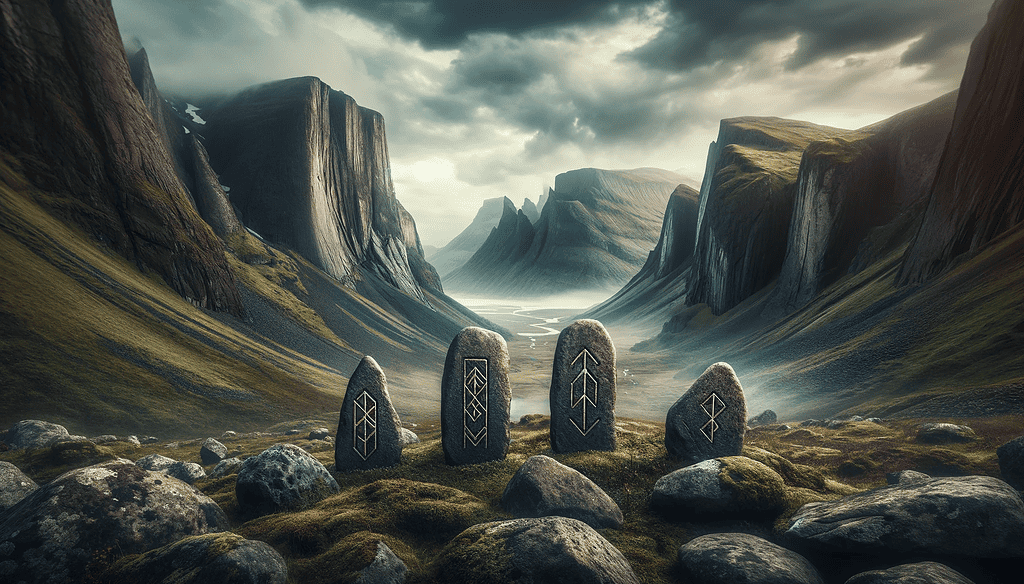
A Brief Foray into the Elder Futhark Runes
Unveiling the Ancient Alphabet
The Elder Futhark runes, a set of 24 mystical symbols, serve as a cornerstone of Norse mythology and the wider realm of Germanic traditions. These runes, each with its own name and inherent meaning, offer a glimpse into the values, beliefs, and daily life of ancient Norse and Germanic peoples. Here, we embark on a brief journey through these enigmatic characters, touching upon their symbolism and the rich lore that surrounds them.
As we delve into the enigmatic world of the Elder Futhark runes, each symbol holds a deeper story, waiting to be unfolded.
To explore the rich tapestry of history, symbolism, and wisdom each rune embodies, click on its name.
You’ll be guided to a dedicated page where we unravel the mysteries of the rune in greater depth, including its pronunciation, historical context, and the myriad ways it has been interpreted and used throughout the ages. This journey into the heart of each rune promises to enrich your understanding and connection to these ancient symbols, opening new pathways to the wisdom they hold.
Fehu: Wealth and Abundance
Fehu, the first rune, symbolizes wealth, prosperity, and material success. It speaks to the abundance of the earth and the rewards of hard work, echoing the agrarian lifestyle of the Norse.
Uruz: Strength and Vitality
Uruz represents untamed strength, health, and primal energy. It is the wild ox, a symbol of raw power and determination, embodying the force of creation and destruction alike.
Thurisaz: Protection and Challenge
Thurisaz embodies the thorn, a symbol of defense and protection, but also of challenges that provoke growth. It stands for the giants of Norse mythology, offering a dual aspect of danger and guardian strength.
Ansuz: Divine Connection
Ansuz is the rune of communication, often associated with the god Odin. It signifies divine inspiration, the breath of life, and the power of words and wisdom.
Raidho: Journey and Rhythm
Raidho represents the journey of life, movement, and rhythm. It reflects the importance of living in harmony with the world’s natural order and the voyages that shape our destiny.
Kenaz: Knowledge and Illumination
Kenaz is the torch, a beacon of light in the darkness. It symbolizes knowledge, enlightenment, and the revealing of hidden truths, akin to the fires that warm and guide.
Gebo: Gifts and Generosity
Gebo signifies the giving of gifts and the balance of relationships. It underscores the importance of generosity and the exchange of goodwill, central to Norse social bonds.
Wunjo: Joy and Harmony
Wunjo is the embodiment of joy, pleasure, and harmony among kin. It signifies the bliss that comes from achieving one’s desires and the importance of familial and communal bonds.
Hagalaz: Disruption and Change
Hagalaz, like the hailstorm, signifies disruptive change, chaos, and the destructive forces of nature. It challenges us to endure and transform through life’s trials.
Nauthiz: Need and Necessity
Nauthiz represents need, hardship, and the lessons learned through struggle. It teaches the value of endurance and the strength found in facing life’s necessities.
Isa: Stillness and Ice
Isa embodies ice, a symbol of stillness, clarity, and blockage. It reflects the moments of pause that lead to introspection and deeper understanding.
Jera: Cycles and Harvest
Jera symbolizes the cycle of the year, harvest, and fruitful completion. It represents the rewards of patience and the natural progression of seasons, both in agriculture and life.
Eihwaz: Endurance and Transition
Eihwaz, the yew tree, stands for resilience, endurance, and the transition between life and death. It reflects the Norse understanding of life’s cyclical nature and the connection between different realms.
Perthro: Mystery and Fate
Perthro is the rune of fate, the unknown, and the cup of destiny. It embodies the mysteries of life and the role of luck and chance in the Norse worldview.
Algiz: Protection and Sanctuary
Algiz represents the elk, a symbol of protection and sanctuary. It offers a shield against adversaries and a reminder of the sacred spaces within and around us.
Sowilo: Success and Solar Power
Sowilo, the sun, symbolizes success, vitality, and the life-giving force of the solar ray. It embodies the Norse respect for the sun’s power to nurture and sustain life.
Tiwaz: Honor and Justice
Tiwaz, associated with the god Tyr, stands for justice, honor, and the societal order. It emphasizes the virtues of bravery, righteousness, and the legal structures of Norse society.
Berkano: Birth and Renewal
Berkano, the birch tree, signifies new beginnings, growth, and the nurturing aspects of femininity. It represents the cycle of birth, renewal, and the maternal.
Ehwaz: Trust and Partnership
Ehwaz, the horse, symbolizes trust, loyalty, and the bond between comrades. It highlights the importance of relationships built on mutual respect and cooperation.
Mannaz: Humanity and Self
Mannaz represents humanity, the self, and the collective human experience. It underscores the aspects of intelligence, awareness, and the social nature of humankind.
Laguz: Water and Intuition
Laguz, water, embodies the flow of life, intuition, and the unconscious mind. It speaks to the Norse appreciation for water’s life-sustaining properties and its spiritual significance.
Inguz: Fertility and Potential
Inguz symbolizes fertility, the potential for growth, and the gestation of ideas and projects. It represents the god Ing and the vital forces of nature that drive creation.
Dagaz: Daylight and Awakening
Dagaz stands for the dawn, awakening, and the clarity of daylight. It signifies breakthroughs, enlightenment, and the transformation from darkness to light.
Othala: Heritage and Inheritance
Othala embodies heritage, inheritance, and the wealth of generations. It underscores the importance of ancestral land, legacy, and the ties that bind families and communities across time.
Each rune, with its unique symbol and complex meanings, offers a window into the Norse soul, intertwining the spiritual with the everyday and the divine with the mortal. For those captivated by the mysteries of Norse mythology and the pagan path, the Elder Futhark runes are a fascinating subject of study, meditation, and reflection, rich with insights into ancient wisdom and the enduring human spirit.
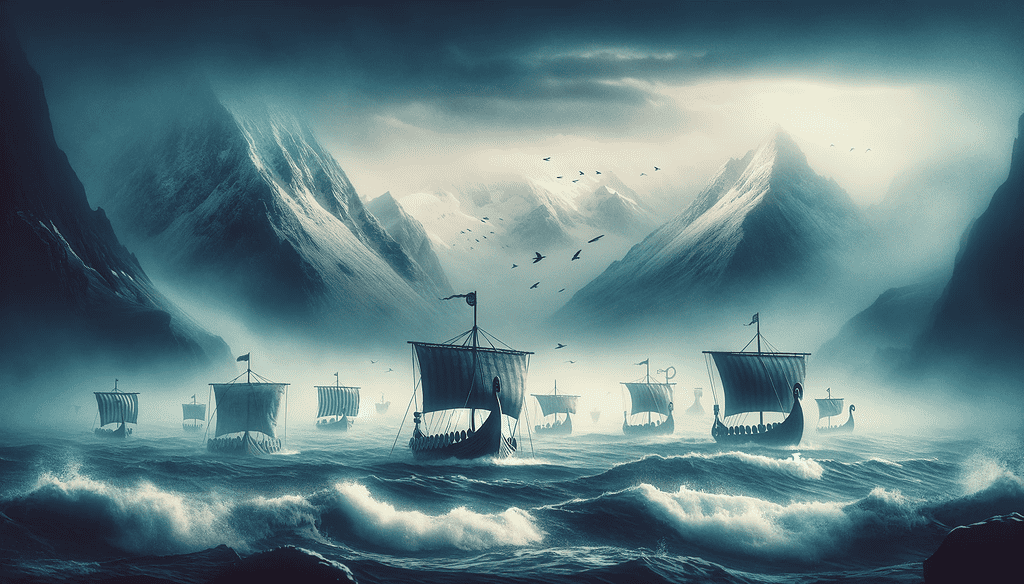
The Evolution of Runes: Beyond the Elder Futhark
Journey Through Time: The Runic Transitions
The runic alphabets, with their deep roots in the ancient world, are a fascinating study of cultural evolution and adaptation. While the Elder Futhark runes form the bedrock of runic writing systems, their journey through history reveals a rich tapestry of change, leading to the emergence of the Younger Futhark and Anglo-Saxon Futhorc. These variations reflect not only shifts in writing practices but also the broader movements of peoples, ideas, and languages across the landscapes of Northern Europe.
| Runic System | Time Period | Region | Number of Runes | Key Features | Linguistic Influence |
|---|---|---|---|---|---|
| Elder Futhark | 2nd to 8th centuries | Northern Europe, Scandinavia | 24 | Original runic alphabet, widely used across Germanic lands | Proto-Norse, Early Germanic languages |
| Younger Futhark | 8th to 12th centuries | Scandinavia | 16 | Reduced number of runes, reflecting changes in the Norse language during the Viking Age | Old Norse |
| Anglo-Saxon Futhorc | 5th to 11th centuries | British Isles, Northern Germany | 29-33 | Expanded from Elder Futhark, included runes for sounds specific to Old English and Frisian | Old English, Frisian |
From Elder to Younger: The Transformation of Runes
The transition from the Elder Futhark to the Younger Futhark, around the beginning of the Viking Age, marks a significant shift in the runic tradition. The Younger Futhark, with its 16 runes, adapted to the linguistic changes of the Norse language, showing a move towards a more streamlined, efficient writing system. This reduction in characters from the original 24 of the Elder Futhark reflects changes in sounds and dialects among the Nordic peoples, illustrating the dynamic nature of languages and their writing systems.
Across the Seas: The Anglo-Saxon Futhorc
Meanwhile, in the British Isles, the runic system took another path, evolving into the Anglo-Saxon Futhorc. Expanding the Elder Futhark’s roster, the Futhorc included up to 33 runes at its peak. This adaptation was influenced by the Anglo-Saxon and Germanic tribes’ specific needs, incorporating sounds unique to their languages. The Futhorc’s increased complexity allowed for a more nuanced expression of the Old English and Frisian languages, showcasing the adaptability of runes to different linguistic contexts.
Regional Variations: A Reflection of Diverse Cultures
The regional variations in runic alphabets, such as the Younger Futhark in Scandinavia and the Anglo-Saxon Futhorc in the British Isles, highlight the spread of runic writing across Northern Europe. These variations were not merely linguistic but also carried deep cultural and symbolic meanings, adapting to the spiritual and practical needs of the diverse communities that used them. From rune stones in Scandinavia to memorial stones in the British Isles, the runes served as a potent medium for commemorating the dead, invoking magical properties, and marking significant events.
The Runes in Art and Magic: A Continuation of Tradition
Despite the evolution of the runic alphabets, their use in art, magic, and everyday objects remained a constant. The magical properties attributed to runes, alongside their practical application as a writing system, demonstrate the multifaceted role of runes in Norse and Anglo-Saxon cultures. From the Vimose Comb to the Jelling Stone, runic inscriptions offer a glimpse into the past, where the power of the word was intertwined with the material and spiritual worlds.
The Living Legacy of Runic Systems
The transformation of the runic alphabets over time—from the Elder Futhark to the Younger Futhark and Anglo-Saxon Futhorc—tells a story of adaptation, cultural exchange, and continuity. These systems, with their roots in the ancient past, continue to fascinate and inspire, connecting us to the worldviews and wisdom of the Norse and Anglo-Saxon ancestors. As we explore the journey of the runes, we uncover not only the history of a writing system but also the enduring legacy of the peoples who crafted them.
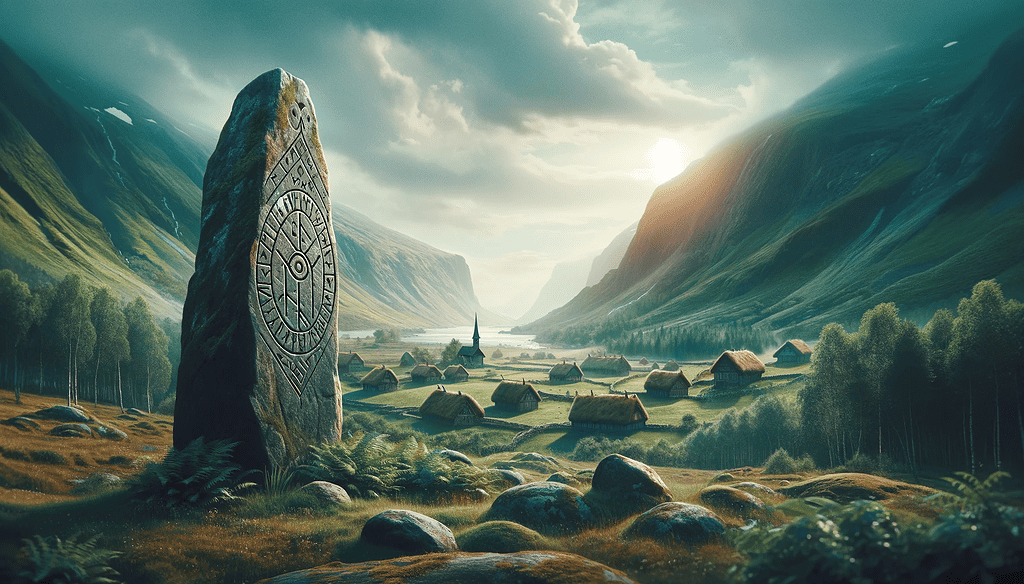
The Cultural Tapestry of Runes
Runes in Norse Life and Legend
Runes held a dual role in the Norse world, serving both practical and mystical purposes. As a writing system, they were used across Northern Europe, carved into wood, stone, and metal, recording everything from simple trade transactions to significant historical events. This everyday use of runes connected the people to their language and heritage, embedding runic script into the fabric of daily life.
Mystical Runes and Norse Mythology
Beyond their utilitarian function, runes were deeply woven into the spiritual and mythological tapestry of the Norse. Believed to possess magical powers, runes were integral to pagan practice, used in rituals for divination, protection, and healing. Their symbolic meanings were rooted in Norse cosmology, with each rune encapsulating complex concepts and stories tied to gods, the natural world, and the fate of humankind.
The World Tree and the Cosmic Runes
The runes’ mystical aspects are perhaps best illustrated by their association with Yggdrasil, the World Tree in Norse mythology. This cosmic tree connected all realms of existence, and runes were seen as tools to tap into its profound wisdom and power. The act of rune casting, therefore, was not just a method of fortune-telling but a way to engage with the universe’s fundamental forces.
Runes Across Time and Space
From the earliest runic inscriptions on the Vimose Comb to the monumental rune stones that dot the Scandinavian countryside, the runes serve as markers of the Norse cultural and spiritual landscape. Their presence in various objects and monuments across Scandinavia and beyond to the British Isles and Northern Germany attests to the widespread influence of Norse culture and the adaptability of the runic system.
The Legacy of Runic Wisdom
The depth of runic wisdom, encapsulated in the rune poems and the names of the runes themselves, continues to fascinate scholars and practitioners alike. The meanings of the runes, enriched by centuries of lore and interpretation, offer a window into the Nordic soul, where the lines between the earthly and the divine are seamlessly intertwined.
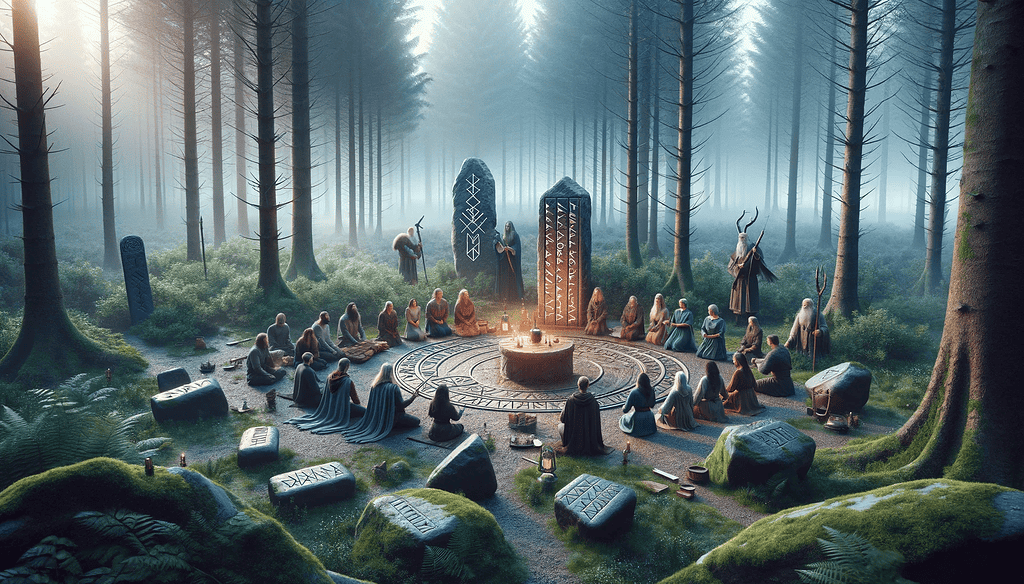
Runes in the Modern Imagination: Revival and Practice
The Academic and Cultural Revival
In modern times, there has been a significant resurgence of interest in Norse runes, bridging academic study with cultural revival. Scholars delve into the historical origins of runic writing, unearthing details from the earliest runic inscriptions to the use of runes at the end of the Viking Age. This academic pursuit enriches our present knowledge, casting light on the runes’ development, their linguistic nuances, and their role in the tapestry of Germanic languages.
Runes and Modern Paganism
Parallel to scholarly interest, runes have found a vibrant life within modern pagan and witchcraft communities. Here, the ancient symbols are revered not only for their historical significance but for their potent spiritual and magical properties. Practitioners engage in rune casting as a form of oracle reading, seeking guidance and insight through the symbolic meaning of the runes, much as their ancestors might have done.
The Fusion of Tradition and Contemporary Practice
This blending of ancient tradition with modern spiritual practice showcases the enduring power of the runes. From the creation of personal rune sets carved from wood or stone to the development of intricate rune layouts for divination, the contemporary use of runes is a testament to their lasting relevance. The runic scripts, once carved on rune stones and memorial stones, now find new expressions in jewelry, art, and ritual tools, bridging the gap between the past and the present.
Norse Runes in Popular Culture
Moreover, Norse runes have permeated popular culture, appearing in literature, movies, and games, further fueling interest in their study and use. This cultural phenomenon has introduced Norse mythology and runic magic to a broader audience, sparking curiosity and engagement with these ancient symbols in diverse and imaginative ways.
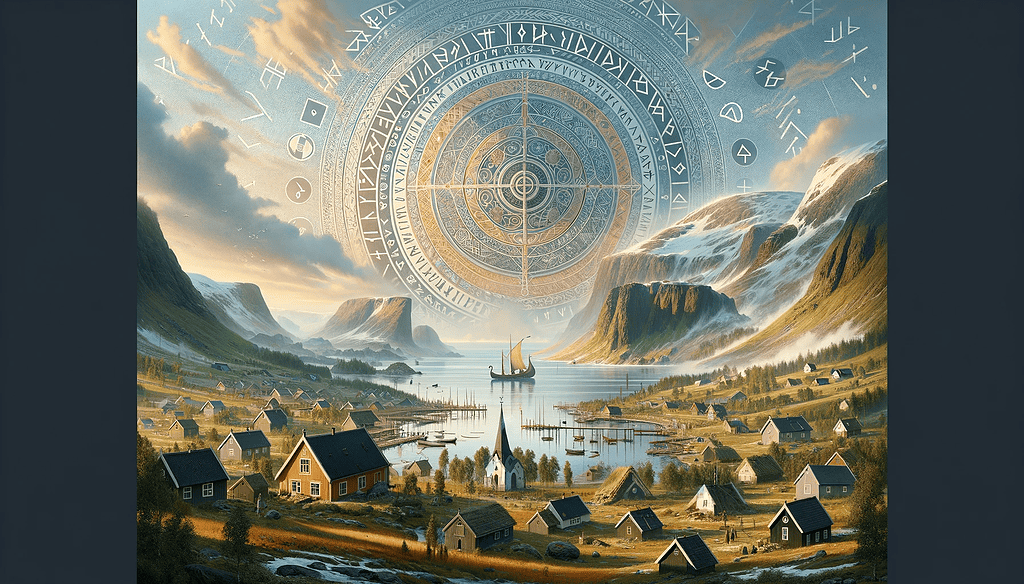
Runes Today: Symbols of Heritage and Belief
Embracing Ancient Symbols in Modern Times
In the contemporary tapestry of spirituality and cultural expression, Norse runes stand out as powerful symbols of heritage and belief. Their use extends far beyond the historical, reaching into the hearts of those who seek connection with the ancient Norse and Germanic traditions. Today, runes are not merely artifacts of a bygone era but vibrant elements of modern pagan practices, cherished for both their historical depth and their mystical resonance.
Runes in Ritual and Divination
Within modern pagan and witchcraft communities, runes have found a significant place in ritual practices and divination. Each rune, with its own unique meaning and symbolism, is used as a tool for gaining insight, making decisions, and connecting with the divine. Rune reading, a practice that draws on the ancient art of casting stones, has been adapted to fit contemporary spiritual needs, offering guidance and reflection through the interpretation of runic symbols.
Cultural Heritage Reimagined
Beyond the realm of personal spirituality, runes also serve as a cultural touchstone for those of Norse descent and for enthusiasts of Viking history. They are embraced as emblems of identity and heritage, often incorporated into tattoos, artwork, and commemorative pieces. This reimagining of runes as cultural symbols reflects a broader trend of reviving ancient symbols to forge a sense of continuity with the past.
Crafting Personal Connections
Many modern practitioners take a hands-on approach to their runic practice, creating their own runes from natural materials such as wood, stone, or bone. This personal connection to the crafting process is seen as a way to imbue the runes with individual energy and intention, making each set unique to its maker. The choice of material, often sourced from significant locations or chosen for its symbolic meaning, adds another layer of personal relevance to the runes.
Runes and the Digital Age
The digital age has also seen a fusion of ancient runic wisdom with modern technology, allowing for the sharing of knowledge, interpretations, and creative expressions of runic art online. Websites, forums, and social media platforms dedicated to Norse mythology and paganism serve as gathering spaces for those interested in runes, facilitating a global community connected by a shared interest in these ancient symbols.
Through these various applications, Norse runes continue to inspire, guide, and connect individuals across the world, proving that these ancient symbols still hold significant power and relevance in modern spiritual and cultural landscapes.
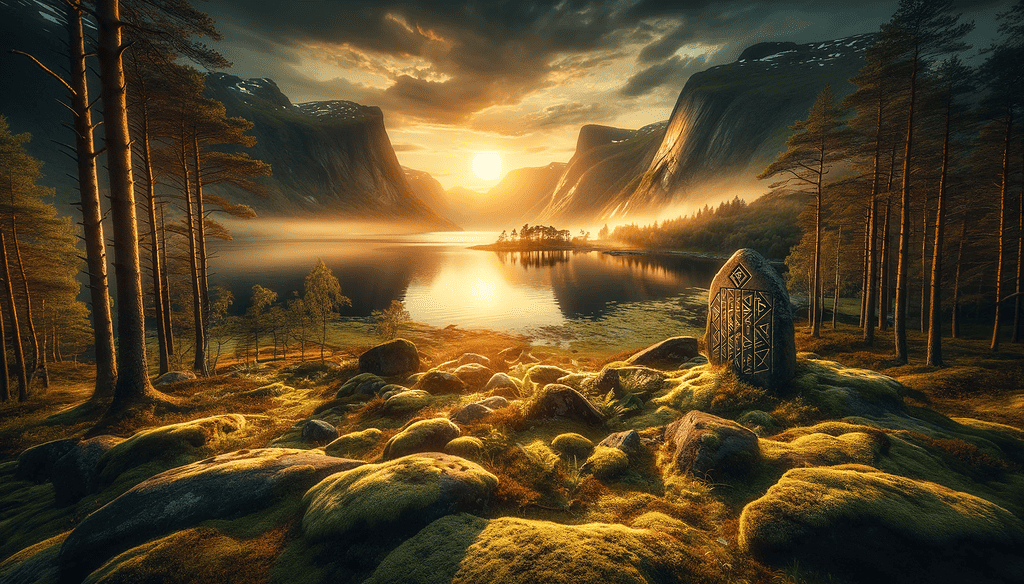
Reflecting on Runes: From Ancient Scripts to Modern Spirits
The 24 Elder Futhark runes, with their deep roots in Norse mythology and their broad reach across the tapestry of ancient and modern cultures, continue to enchant and inspire.
These ancient symbols, once carved into wood and stone, have traversed centuries to become key elements in contemporary spiritual practices and cultural identities.
We invite you to delve deeper into the individual meanings of these runes, exploring their rich history and multifaceted significance through linked articles. As we reflect on the runes’ remarkable journey from age-old inscriptions to modern-day spiritual tools, it’s clear that their allure remains as potent and relevant as ever, connecting us across time to the wisdom of the ancients.
Check out these other categories:
